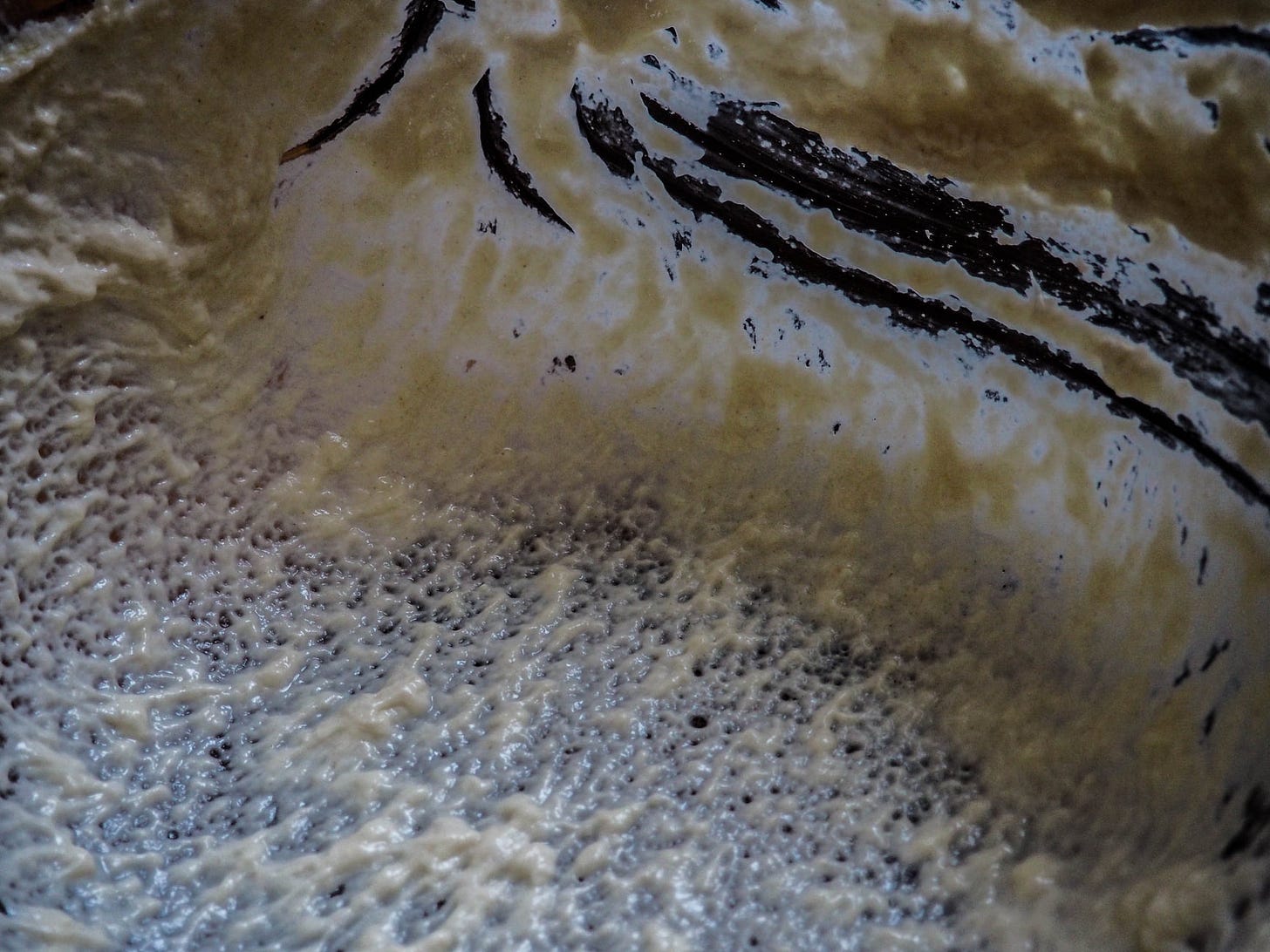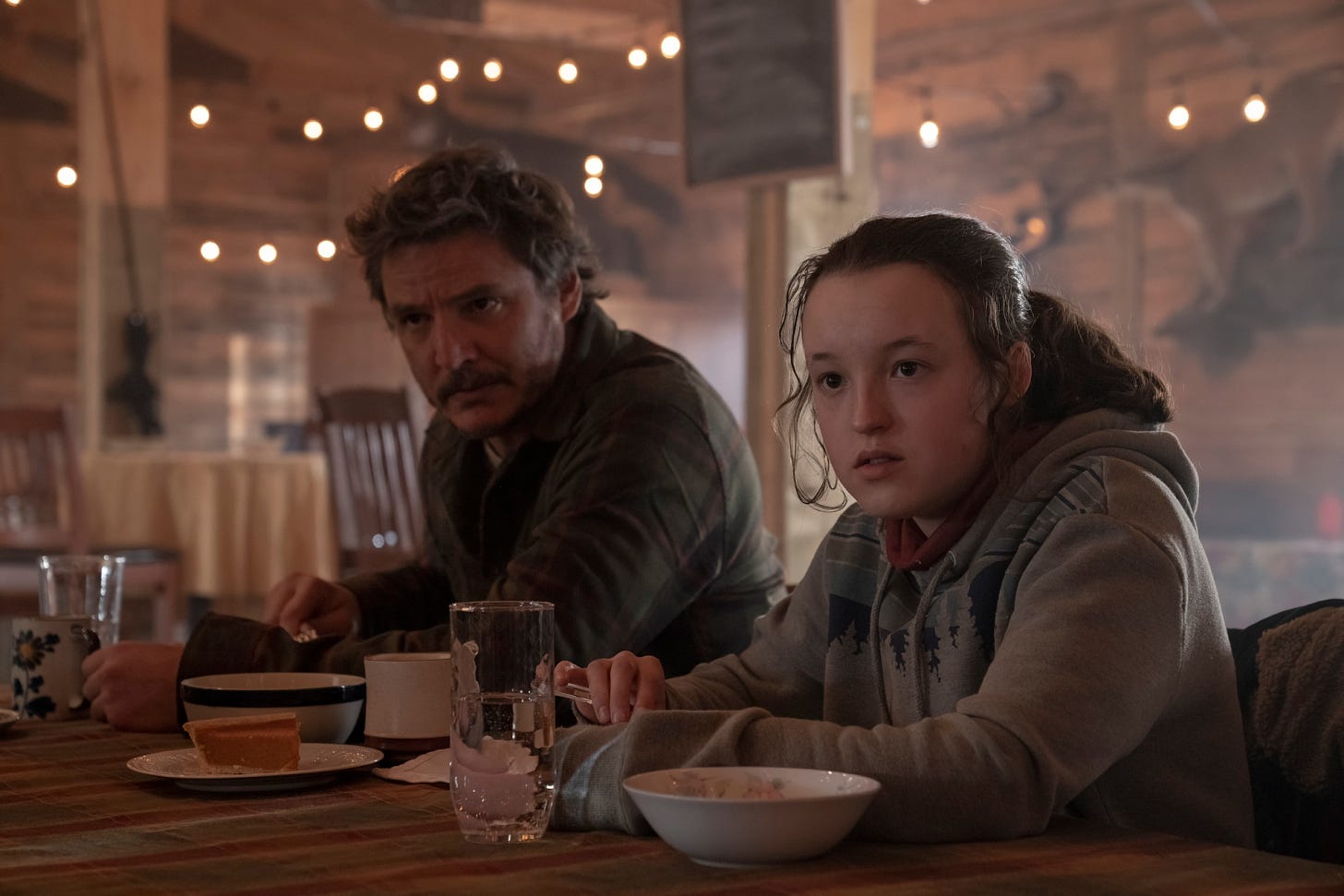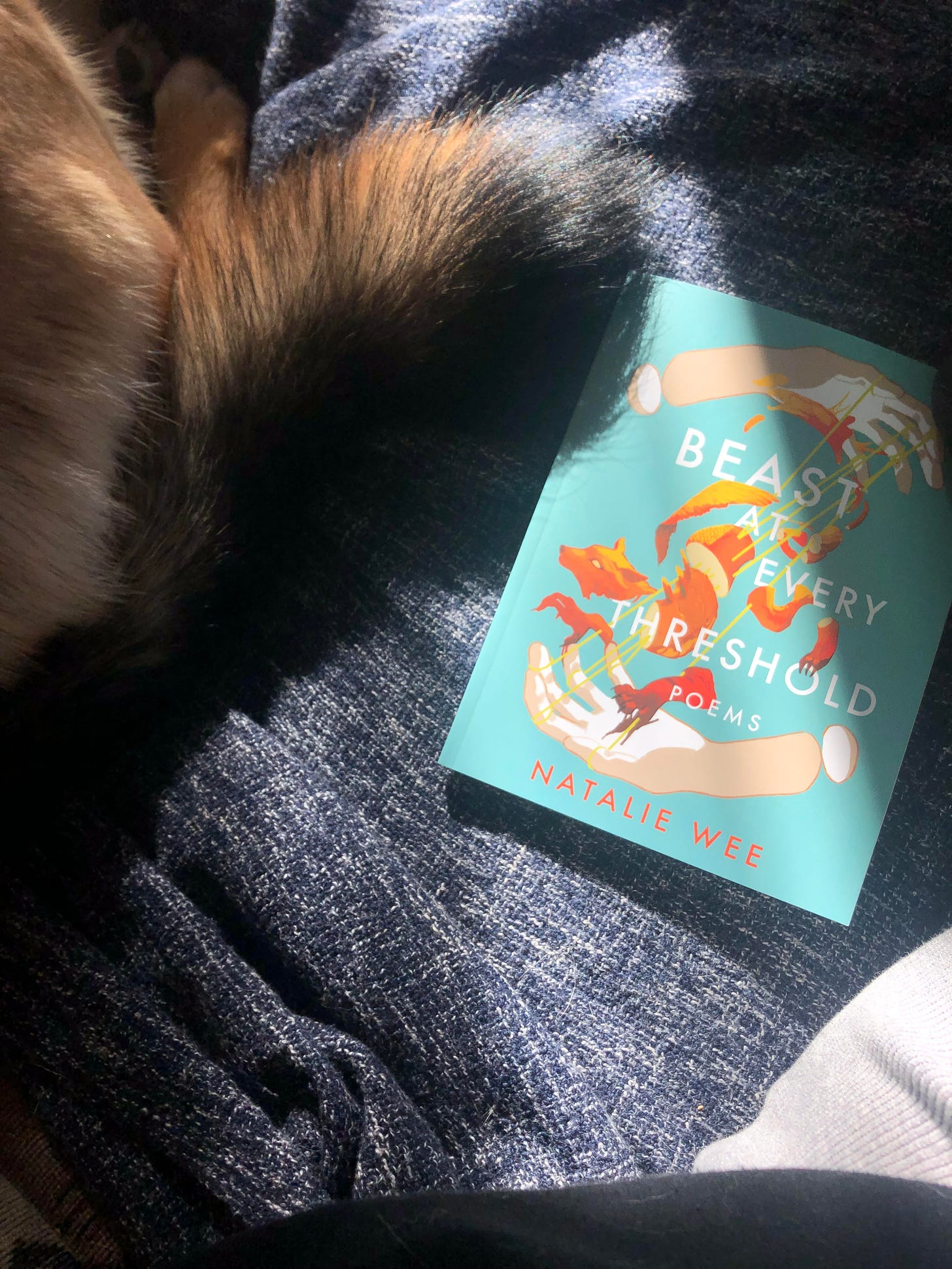Image description: Close up on a bowl with remnants of sourdough.
foodstuff is a free reader-supported publication that releases new material twice monthly. To receive posts and recipes right to your inbox, consider becoming a subscriber. If you’re already a supporter, thank you, thank you, thank you for being here with me!!
Recently I found a singular larva in my flour. Just one lonely lump writhing about in the sieve, shocked to have been separated from the haven of their edible home.
This was the first time I’d found anything in my flour that was obviously not flour. I wondered how long this little almost-bug had been swimming in the yellowy grit of the semolina. The bag was new to me and sealed, though that probably doesn’t mean much when it comes to tiny lives that fit in places I can’t see. Did they travel from the mill or the store? Were they alone? What might my eyes have missed when I sifted through the flour? What other lives might be wiggling about in the heavy black garbage bag that is, as I write this, on its way to the dump?
I’m not an expert on flour bugs and their lifeways. However, I do know that they like flour (obviously) and that the conditions of industrial food production support their survival. Flour is an excellent substrate for the survival and reproduction of insects and many varieties of fungal spores. When those insects develop a resistance to pesticides, which are necessary in the cultivation of monocultures like most wheat varieties consumed today, there’s not much stopping them from reproducing at rapid rates.
Humans like flour too– or at least, we’re encouraged to by the scale of its production which, Marci Baranski in The Globalization of Wheat, and Courtney Fullilove in The Profit of the Earth, assert is tied to European and American imperialism (If you’re interested in the latter, it is really too bad that I definitely do not have a pdf copy via my academic institution…). Some 793 million metric tonnes of flour were consumed last year, meaning that the movement of flour (and its companions) happens on a massive scale, to the point that it is impossible to track and halt infestations of all kinds.
If, like me, you have been watching The Last of Us, you might already have concerns about flour production, though not for fear of eating a bug. You may have caught, in the first episode, all of the flour almost touched or consumed by the central characters: the pancakes Sarah cannot make, the biscuits she and her father pass up, the raisin cookies she wrinkles her nose at, and the birthday cake that Joel forgets.
These notable misses make sense in the second episode, when we learn that the cordyceps outbreak– which has mutated to survive in human hosts– likely began in a flour mill in Indonesia. The mill is referred to by mycologist, Dr. Ratna, as substrat sempurna–the “perfect substrate” for a fungus like cordyceps to thrive and evolve. From there, viewers are left to imagine that the infection likely spread through a mixture of exported flour and human bites. Joel seemingly confirms this later in the episode.
As someone who thinks about food and food systems a lot, I was not surprised that the first victims of the cordyceps outbreak were agriculture labourers in the Global South, especially not after the information garnered in the first years of the pandemic, which outlined the sheer volume of COVID outbreaks reported in food processing, due in part to high density workplaces and blocks to worker protections. Of course, prior to COVID there have been countless other well documented examples of the dangerous conditions of food processing. Notable among them is Upton Sinclair’s well-cited 1906 novel, The Jungle, which depicts the living and working conditions in Chicago’s meatpacking district.
With COVID as our looming context, it is not hard to imagine that food service workers, in addition to women and femmes who are often tasked with care work, including food preparation in professional setting and in the home, were especially vulnerable to the cordyceps outbreak depicted in the show, not only through exposure, but also the cascading impacts a food borne contaminant– in a staple such as flour, no less–would have on those already poised to experience food insecurity.
I want to talk more about food in this show, and I will in the future, but I’m trying to keep with flour today.
So far, I’ve not noticed wheat or grains on any plates; there’s no flour used in the dishes Bill serves to Frank, Joel, and Tess, and most other foods we see are canned or hunted or foraged. There is one single slice of pie visible on the table in the community of Jackson. I assume this is likely made from some grain– maybe not wheat flour–but it sits entirely uneaten!
Image description: Joel (Pedro Pascal), left, and Ellie (Bella Ramsey), right finishing a meal. An uneaten slice of pie sits between them.
Photo credit: Liane Hentscher/HBO
Overall, food-wise, and sans-cans, which are from before the infection, the diet that characters are forced to consume incorporate typical ingredients of those who’ve lived on the lands they’re traversing for millennia. And while this isn’t to say that Indigenous food-ways in the so-called United States are locked up and unchanging, this depiction does reflect the brilliance of food-ways that centre reciprocal relationships with land in general, and especially in the face of catastrophes accelerated by infrastructures of industrial food production and labour exploitation, as we see in the show.
I loved the brief scene at the beginning of episode 6, where Marlon and Florence, played by Graham Greene and Elaine Miles are just living their lives, hunting, having soup and tea while the other characters are ravaging each other for remnant resources and control over the inner cities (and while a commune-living ex-military cowboy is still afraid of the word “communism”).
It is true that food is not central to the show, though I cannot help but think about how food production, distribution and consumption shapes the story in both quiet and powerful ways. Whether it is intentional or not, The Last of Us is attuned to the troubles of industrial food production and distribution, particularly as they relate to food security and labour conditions in an increasingly dangerous environmental and economic climate.
Somehow, my larva incident and the outbreak in The Last of Us are not the only encounters I’ve had with contaminated flour in the past month! There is, of course, also the play I’m thinking with for the second chapter of my dissertation– Burning Vision, by Marie Clements– wherein flour is one vehicle for radioactive contamination. But you can read about that in 500 years when I finally finish.
Are you currently watching The Last of Us? What are your thoughts? I would love to read your reflections in the comments.
Reading
Finished in the month of February
Poetry
Beast at Every Threshold by Natalie Wee (pictured above)
Non-Fiction
Gentrification is Inevitable and Other Lies by Leslie Kern







Melissa, I love reading your writing. And in approx 500 years, I'll be reading that chapter on Burning Vision (it's up next on the comps list)!
I like bread, I bought a book called 'How to murder your employers', haven't started it yet but I will eventually. I watch The Last of Us with my partner, they were really touched by the queer love episode, not to spoil it but that sold us on the series.